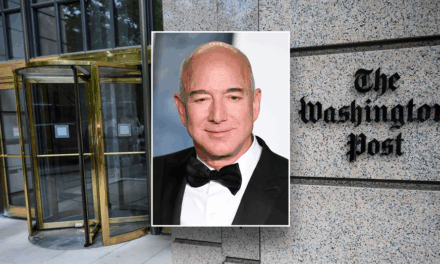In the dynamic landscape of corporate America, Diversity, Equity, and Inclusion (DEI) initiatives have come under scrutiny as companies strive to foster more inclusive workplaces. Recently, Johnson & Johnson, one of the world’s most recognized healthcare corporations, found itself in the midst of controversy following a civil rights complaint lodged against it regarding its DEI practices.
The complaint was filed by a group that alleges that Johnson & Johnson has engaged in discriminatory practices while implementing its DEI programs. The group, which includes a variety of stakeholders concerned with fairness in hiring, promotions, and workplace treatment, claims that the company’s efforts to diversify its workforce have led to reverse discrimination against non-minority employees. This has raised serious questions about the balance between promoting diversity and ensuring equity for all employees regardless of their background.
In response to the allegations, Johnson & Johnson has firmly denied any wrongdoing and stated that it remains committed to its DEI initiatives, which it views as essential for a thriving corporate culture. The company emphasizes that its DEI efforts are designed to ensure that all employees, regardless of their race, gender, sexual orientation, or other attributes, have equal opportunities to thrive within the organization. The firm indicated that diversity is not only a moral imperative but also a business imperative, as diverse teams are better equipped to develop innovative solutions and meet the complex needs of a diverse customer base.
The complaint highlights issues that have been bubbling beneath the surface in many companies as they strive to implement DEI strategies. Critics of such initiatives argue that while the goals may be noble, the execution can lead to practices that unintentionally marginalize certain groups. In the case of Johnson & Johnson, the complaint specifically points to hiring practices that allegedly favor minority candidates at the expense of qualified candidates from non-minority backgrounds.
According to sources familiar with the matter, the complaint has sparked a broader discussion about how corporations define and implement diversity efforts. Some argue that strict quotas or preferential treatment in hiring can compromise the efficacy of a company’s workforce by favoring diversity over merit. Others counter that the obstacles faced by historically marginalized groups require pro-active measures to level the playing field and create environments where everyone has the opportunity to contribute and succeed.
Industry experts have weighed in on this hot-button issue, noting that while Johnson & Johnson is not the only company facing such accusations, the outcomes of this case could set significant precedents for future DEI initiatives across the corporate landscape. Legal scholars suggest that cases like this may lead to increased oversight and scrutiny of DEI programs and their compliance with federal and state employment laws.
In defense of its DEI strategy, Johnson & Johnson cited various initiatives aimed at fostering a more inclusive workplace. The company has invested significantly in training programs, mentoring opportunities, and partnerships with organizations that promote workforce diversification. Johnson & Johnson also highlighted its commitment to transparency and accountability, insisting that all its DEI efforts are compliant with applicable laws and regulations.
The organization also referenced the results of its internal assessments that show positive trends in employee satisfaction and engagement across diverse demographic groups. These findings, the company argues, illustrate that its DEI efforts have not only succeeded in promoting a more diverse workforce but have also contributed to a more harmonious and productive workplace environment.
The civil rights complaint against Johnson & Johnson does not appear to be an isolated incident, as a growing number of companies across various industries have faced similar allegations over their DEI practices. These incidents reflect a broader societal debate about fairness and equality in the workplace. As companies balance the dual objectives of increasing diversity while safeguarding against potential discrimination claims, the discussion surrounding DEI practices continues to evolve.
Legal experts anticipate that the outcome of the Johnson & Johnson case could influence how organizations approach their DEI strategies moving forward. If the complaint leads to greater scrutiny of the methods and metrics used to implement DEI programs, businesses may need to revisit their policies and ensure they promote diversity without sacrificing meritocracy.
Moreover, as consumers become increasingly aware of corporate practices and philosophies, public perception will play a crucial role in shaping the future of DEI efforts. Johnson & Johnson, which has a long-standing reputation in the healthcare sector, understands that maintaining trust and credibility in the eyes of the public is paramount. The company has a robust public relations strategy in place, which it is leveraging to clarify its stance and articulate the importance of its DEI initiatives.
As this situation unfolds, many are keeping a close eye on how other corporations react to similar allegations and how they will navigate the complex waters of diversity and inclusion. The Johnson & Johnson case serves as a significant touchpoint in the ongoing conversation about diversity in corporate America, with the potential to influence policy changes beyond just one company.
In conclusion, Johnson & Johnson’s response to the civil rights complaint underlines a significant tension in the application of DEI strategies in the modern corporate environment. While the company strongly supports its DEI initiatives, the complexities of implementation require ongoing dialogue and refinement to ensure that equity and inclusion can be achieved without compromising fairness. The outcome of this complaint may set a precedent not only for Johnson & Johnson but for the broader corporate landscape as well, stimulating further discussion on the essential balance between pursuing diversity and maintaining equal opportunity for all employees.































